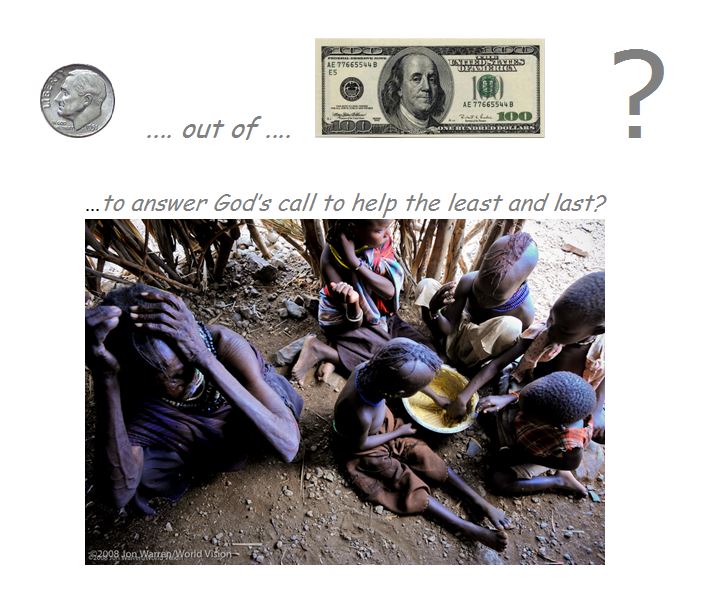The Church – the body of Christ on earth – has a 2000 year tradition of acting on the biblical mandate to help the desperately poor. Throughout the book of Acts and historical accounts of the early Christianity, we see believers, acting both individually and corporately, extending a compassionate hand to the needy and suffering. (John Ortberg’s recent book “Who is This Man?” does an excellent job of outlining how Christ, through His body here on earth, has impacted our world for good… highly recommended.)
With the rise of the institutional church in America during the last two centuries, most major denominations have been powerful agents of compassion towards the poor. Many have their own humanitarian and outreach organizations, some of which have been quite active and effective in serving those who suffer in extreme poverty… their efforts, and the results they have achieved, are commendable – as are the results achieved by in-house missions programs in many of our churches.
Unfortunately, the American Church’s impact worldwide has been declining in recent decades. Domestic mainline Protestant denominations are shrinking and becoming less active and influential on the global scene. Worse still, the Church in America has become more and more internally focused, reflecting our culture’s growing preoccupation with self. Today, less than 2% of the average American church’s overall budget is devoted to international work of any kind; a much smaller fraction is devoted to serving those who suffer in extreme poverty. The figures for individual believers are no better; tithing today
(as a %) is at a lower level than it was during the Great Depression. In fact, tithing and charitable giving combined stand at about 3%, with only a very tiny portion of that going to help those living in extreme poverty. All told, the average American believer’s giving towards the problem of extreme poverty, both individually and through their churches, works out to less than one tenth of one percent – that’s one thin dime out of every hundred dollars of our collective earnings.

Have we, and our churches, missed the biblical mandate
for helping the poor? Or, have we simply ignored it?
These kinds of figures prompted one best-selling author/pastor David Platt (“Radical”) to ask if there might not be better ways for America’s Christians, and their churches, to manage their resources for God’s glory… Will we, the American Church, go down in history as those who, blessed with an abundance of resources, preferred to fund self-serving internal programs to the near exclusion of external ministries that could have lifted the world’s poorest people out of their desperate poverty?
It has been rightly said that the Church is not a building, not an institution… that we are the Church. And if we don’t like the picture painted above, it falls to us to change it, from the bottom up… first, in our own lives, and then by advocating for change in our local church.
Our Father’s call to help the least and the last is clear. Please join us in challenging ourselves, our brothers and sisters in Christ, and our churches to a more compassionate, generous, and faithful engagement with the problem of extreme poverty… check out the materials under the Advocacy tab.
The figures in this post were taken from The Hole in Our Gospel, by Richard Stearns, President, World Vision US. This book was named Christian Book of the Year for 2010 by the Evangelical Christian Publishers Association… highly recommended!
If you found this post meaningful, please share it with a friend!